A Picture Tells a Thousand Words
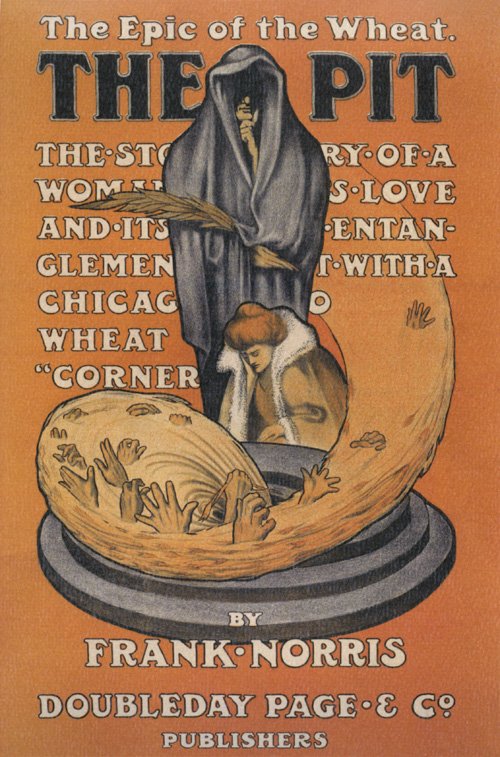 Look at the lurid cover of this dismal-sounding book on my July calendar page: ‘The Pit’, of all cheerful titles, complete with a Grim Reaper and a woman staring into the maelstrom of a sink plug full of drowning people. I was disgusted that I had to look at this all month!
Look at the lurid cover of this dismal-sounding book on my July calendar page: ‘The Pit’, of all cheerful titles, complete with a Grim Reaper and a woman staring into the maelstrom of a sink plug full of drowning people. I was disgusted that I had to look at this all month!
Upon research however, I discover that the book is the second in an incomplete trilogy portraying the production, distribution and consumption of an American crop of wheat; the dryness of the subject is juiced up with human drama. The ‘pit’ of the title refers to the wheat speculation trading pits at the Chicago Board of Trade Building. One reviewer says the book is vividly and finely written, and the author apparently ‘broke with the traditions of his time and brought a fresh perspective to the American novel’. [Goodreads]
After reading Wikipedia’s summary of the plot, the analogous illustration of the cover certainly makes sense – and I am even intrigued enough to be interested in reading the book – but my initial reaction to the cover when I turned the calendar page was repulsion at its unsubtlety. What did readers at the turn of the last century thing, I wonder?
A Nostalgic Glow
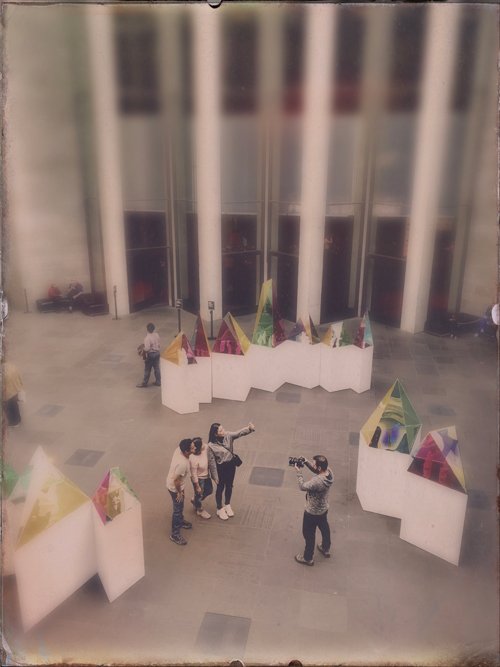 Day 23: StrangersTo celebrate the close of autumn, for last month’s photo challenge, I decided to use a Hipstamatic combination that bestowed a warm, nostalgic glow to my photos. I also used the Depth of Field tool to highlight the focal point, editing each image individually rather than simply applying a pre-set.
Day 23: StrangersTo celebrate the close of autumn, for last month’s photo challenge, I decided to use a Hipstamatic combination that bestowed a warm, nostalgic glow to my photos. I also used the Depth of Field tool to highlight the focal point, editing each image individually rather than simply applying a pre-set.
I knew the very brown tones would prove to be a challenge as well, and tweaked that occasionally to complement the colours of the subject – this had quite a nice effect on blue tones. Here are a couple of favourites: the gallery photo for the amusing subject, and the self-portrait for the effects.
Click here to view the full gallery, or here to visit previous months’ collections.
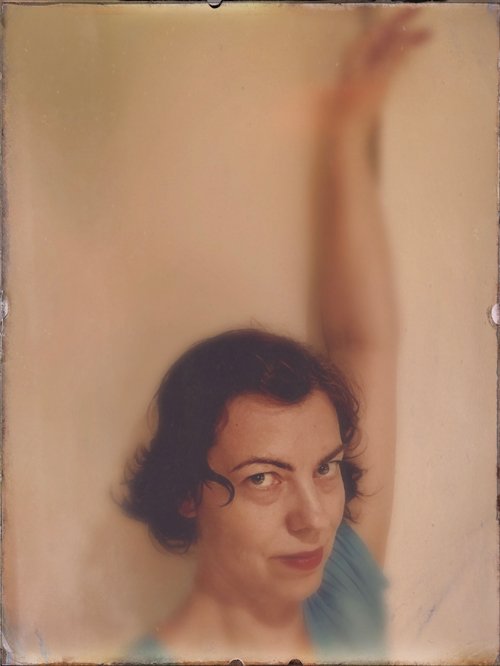 Day 1: Self-Portrait
Day 1: Self-Portrait
The Parisian
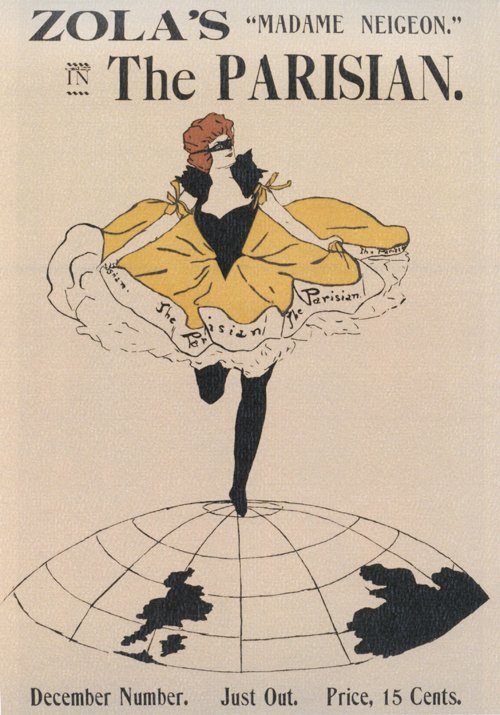 June’s calendar page features an unusual illustration – probably from a periodical going by the text at the bottom. It looks as though the artist was inspired by the fin-de-siècle style of Henri Toulouse-Lautrec’s graphic posters. It is fitting for me, anyway, as this evening I am off to the theatre, albeit to see quite a different style of play. Happy June!
June’s calendar page features an unusual illustration – probably from a periodical going by the text at the bottom. It looks as though the artist was inspired by the fin-de-siècle style of Henri Toulouse-Lautrec’s graphic posters. It is fitting for me, anyway, as this evening I am off to the theatre, albeit to see quite a different style of play. Happy June!
Finite Homage
 Cover art for PlayStation 2 video game IcoWhile I was researching yesterday’s story about Giorgio de Chirico, I came across one of his evocative paintings of two figures running through a cityscape … that turned out to be the cover of Ico, a Japanese PlayStation 2 video game released in 2001! It made me chuckle that I was momentarily fooled, but I was also impressed by its verisimilitude to de Chirico’s style.
Cover art for PlayStation 2 video game IcoWhile I was researching yesterday’s story about Giorgio de Chirico, I came across one of his evocative paintings of two figures running through a cityscape … that turned out to be the cover of Ico, a Japanese PlayStation 2 video game released in 2001! It made me chuckle that I was momentarily fooled, but I was also impressed by its verisimilitude to de Chirico’s style.
The designer of the game, Fumito Ueda, painted it himself, saying that the surrealistic world of de Chirico matched the allegoric world of Ico. He was particularly inspired by de Chirico’s painting of a tower in The Nostalgia of the Infinite (the last painting in yesterday’s story). While the art of the video game was lauded, I was disappointed to discover it was typical of Japanese animé.
Goes to show you can’t judge even a video game by its cover!
The Mystery and Melancholy of de Chirico
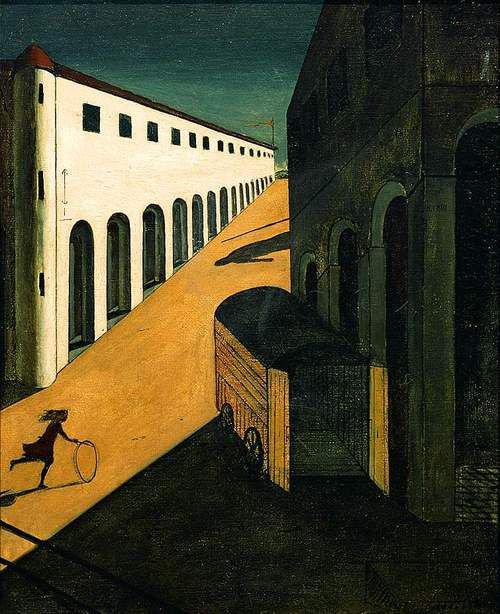 Mystery and Melancholy of a Street, 1913I am sorry to say that I never studied Metaphysical Art when I was at art school – I don’t even remember the term – but I must have been familiar with one of its founders even then, the artist Giorgio de Chirico (1888–1878), for his work has long been a favourite of mine.
Mystery and Melancholy of a Street, 1913I am sorry to say that I never studied Metaphysical Art when I was at art school – I don’t even remember the term – but I must have been familiar with one of its founders even then, the artist Giorgio de Chirico (1888–1878), for his work has long been a favourite of mine.
In Italian, Metaphysical Art translates as pittura metafisica, and de Chirico and fellow Italian painter Carlo Carrà (a leader of the Futurist movement as well) developed it in the second decade of the twentieth century. ‘Metaphysical art combined everyday reality with mythology, and evoked inexplicable moods of nostalgia, tense expectation, and estrangement.’ [Wikipedia]
 The Anguish of Departure, 1914
The Anguish of Departure, 1914
there is a disturbing and vaguely menacing mood in the dreamlike cityscapes.
When you look at de Chirico’s Metaphysical paintings (all produced over a decade, between 1909 and 1919), not only do they certainly evoke such moods, but you are not surprised to learn that they greatly influenced the Surrealists, for there is a disturbing and vaguely menacing mood in the dreamlike cityscapes. It is an effect achieved in part through the juxtaposition of tiny figures against monumental architecture.
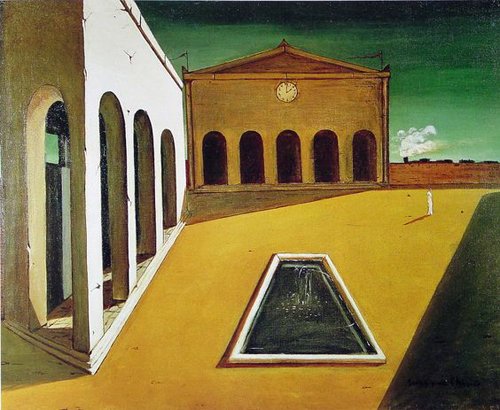 Delights of the Poet, 1913De Chirico was inspired by the writings of Nietzsche, ‘with its suggestions of unseen auguries beneath the appearance of things’, which translated into his own unexpected responses to quotidian surroundings and objects. He wrote in 1909 about the ‘host of strange, unknown and solitary things that can be translated into painting ... What is required above all is a pronounced sensitivity’— and both imagination and inclination I would think, to look beyond the surface of accustomed sights, such as the archways and piazzas of Turin where he spent a few days while on his way to Paris in 1911.
Delights of the Poet, 1913De Chirico was inspired by the writings of Nietzsche, ‘with its suggestions of unseen auguries beneath the appearance of things’, which translated into his own unexpected responses to quotidian surroundings and objects. He wrote in 1909 about the ‘host of strange, unknown and solitary things that can be translated into painting ... What is required above all is a pronounced sensitivity’— and both imagination and inclination I would think, to look beyond the surface of accustomed sights, such as the archways and piazzas of Turin where he spent a few days while on his way to Paris in 1911.
 The Agonizing Morning, 1912His deserted cityscapes of saturated colour – inspired by the ‘metaphysical aspect’ of Turin, especially its architecture – depict strange streets laid out with illogical perspectives, littered with strange objects, all in the high contrast lighting of the bright Mediterranean sun that produced such long shadows. While he focussed first on these, he gradually moved on to explore cluttered interiors that were sometimes occupied by surreal figures, faceless hybrids of statuary and wooden mannequins.
The Agonizing Morning, 1912His deserted cityscapes of saturated colour – inspired by the ‘metaphysical aspect’ of Turin, especially its architecture – depict strange streets laid out with illogical perspectives, littered with strange objects, all in the high contrast lighting of the bright Mediterranean sun that produced such long shadows. While he focussed first on these, he gradually moved on to explore cluttered interiors that were sometimes occupied by surreal figures, faceless hybrids of statuary and wooden mannequins.
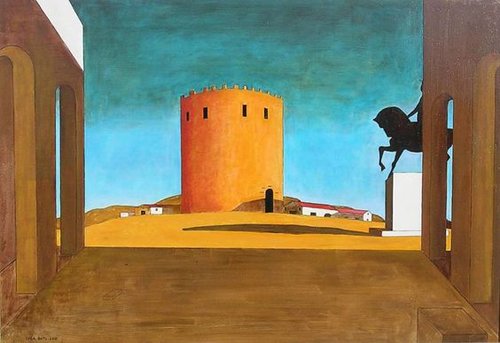 The Red Tower, 1913
The Red Tower, 1913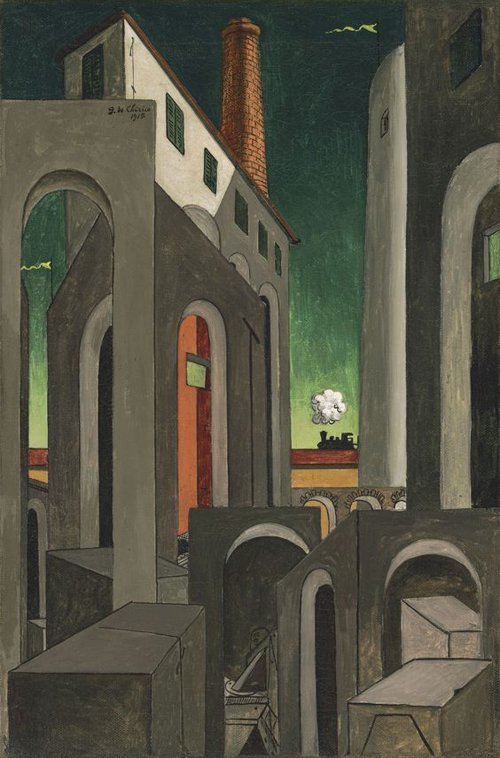 Fleeing Horse, 1917But it is the cityscapes that I love the most, for their disquieting sense of mystery and emptiness, a kind of visual poetry. I would like to run into those paintings, just like the girl with the hoop in Mystery and Melancholy of a Street, to explore those empty streets and discover what is hiding around the corner.
Fleeing Horse, 1917But it is the cityscapes that I love the most, for their disquieting sense of mystery and emptiness, a kind of visual poetry. I would like to run into those paintings, just like the girl with the hoop in Mystery and Melancholy of a Street, to explore those empty streets and discover what is hiding around the corner.
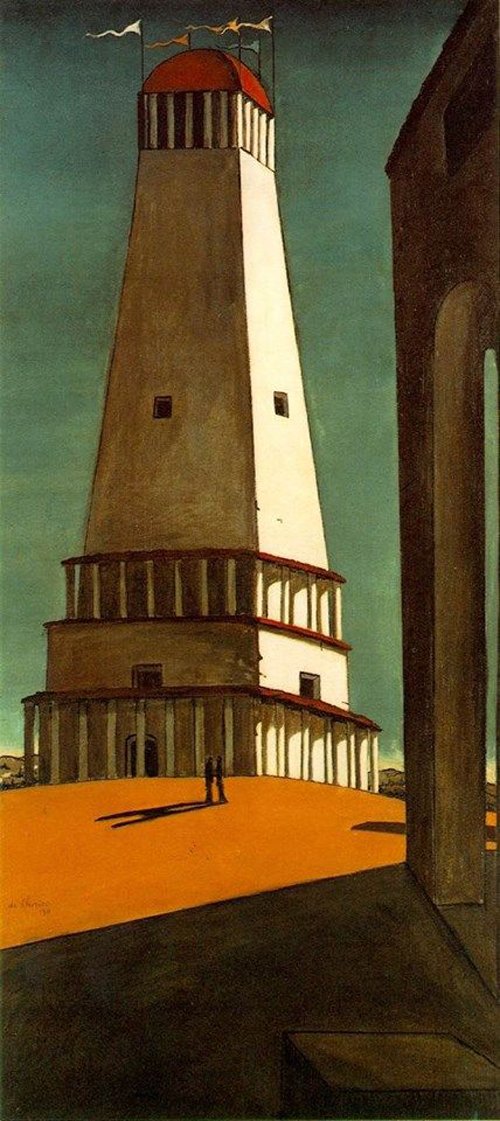 The Nostalgia of the Infinite, 1913
The Nostalgia of the Infinite, 1913
All images found on Pinterest


